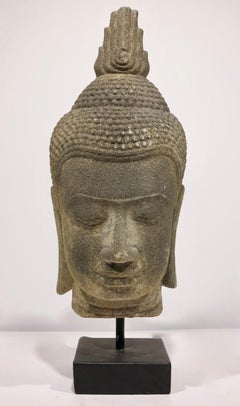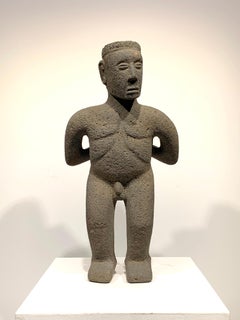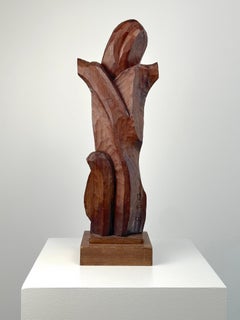Want more images or videos?
Request additional images or videos from the seller
1 of 11
UnknownHead of Harihana Ardhanarishvara sandstone Khmer sculpture20th century
20th century
Price:$500
About the Item
- Creation Year:20th century
- Dimensions:Height: 11.5 in (29.21 cm)Width: 5 in (12.7 cm)Depth: 5 in (12.7 cm)
- Medium:
- Period:
- Condition:
- Gallery Location:Wilton Manors, FL
- Reference Number:1stDibs: LU245211616512
About the Seller
4.9
Platinum Seller
Premium sellers with a 4.7+ rating and 24-hour response times
Established in 2007
1stDibs seller since 2015
428 sales on 1stDibs
Typical response time: 4 hours
Authenticity Guarantee
In the unlikely event there’s an issue with an item’s authenticity, contact us within 1 year for a full refund. DetailsMoney-Back Guarantee
If your item is not as described, is damaged in transit, or does not arrive, contact us within 7 days for a full refund. Details24-Hour Cancellation
You have a 24-hour grace period in which to reconsider your purchase, with no questions asked.Vetted Professional Sellers
Our world-class sellers must adhere to strict standards for service and quality, maintaining the integrity of our listings.Price-Match Guarantee
If you find that a seller listed the same item for a lower price elsewhere, we’ll match it.Trusted Global Delivery
Our best-in-class carrier network provides specialized shipping options worldwide, including custom delivery.You May Also Like
A Grouping of Three Period Ancestor Posts, Possibly Aztec
Located in Chicago, IL
A Grouping of Three Period Figural Ancestor Posts; Mexican Tribal Figures, Possibly Pre-Columbian Aztec. Each are Terra cotta or sandstone with obsidian glass inlay to the eyes; Da...
Category
16th Century Tribal Figurative Sculptures
Materials
Sandstone
Venus, Modern Abstract Figurative Sculpture #37
By Doris Warner
Located in Soquel, CA
Wonderful small scale abstract figurative stone Venus sculpture by Doris Ann Warner (American, 1925-2010), 1975. A highly abstracted female form is expressed through the organic, fl...
Category
1970s Modern Figurative Sculptures
Materials
Sandstone
$2,120 Sale Price
41% Off
H 11 in W 3.75 in D 3.75 in
The Skipper (Le Pacha) by Cécile Raynal - Male portrait sculpture, sandstone
By Cécile Raynal
Located in Paris, FR
The Skipper (Le Pacha) is a smoke sandstone, steel and cotton sculpture by French contemporary artist Cécile Raynal, dimensions are 50 × 31 × 25 cm (19.7 × 12.2 × 9.8 in). The sculpt...
Category
2010s Contemporary Figurative Sculptures
Materials
Sandstone, Steel
$5,439
H 19.69 in W 12.21 in D 9.85 in
Hare and wolf by Cécile Raynal - Animal smoke-fired sandstone sculpture
By Cécile Raynal
Located in Paris, FR
Hare and wolf is a unique smoke-fired sandstone sculpture by French contemporary artist Cécile Raynal, dimensions are 33 × 42 × 16 cm (13 × 16.5 × 6.3 in).
The sculpture depicts an...
Category
2010s Contemporary Figurative Sculptures
Materials
Sandstone
$4,256
H 13 in W 16.54 in D 6.3 in
Cat/bird by Cécile Raynal - Animal figurative smoke-fired sandstone sculpture
By Cécile Raynal
Located in Paris, FR
Cat/bird is a unique smoke-fired sandstone sculpture by French contemporary artist Cécile Raynal, dimensions are 30 cm × 11 cm × 24 cm (11.8 × 4.3 × 9.4 in).
This artwork ironicall...
Category
2010s Contemporary Figurative Sculptures
Materials
Sandstone
$2,802
H 11.82 in W 4.34 in D 9.45 in
Saigneurs, mes cieux mes yeux by Cécile Raynal - Sculpture, portrait, male bust
By Cécile Raynal
Located in Paris, FR
Saigneurs, mes cieux mes yeux is a smoke-fired stoneware sculpture by French contemporary artist Cécile Raynal.
This artwork is composed of three busts placed on their base. Busts a...
Category
2010s Contemporary Figurative Sculptures
Materials
Sandstone, Steel
$60,661
H 98.43 in W 39.38 in D 16.93 in
S’y jeter ou pas by Cécile Raynal - Animal smoke-fired sandstone, wood, dark
By Cécile Raynal
Located in Paris, FR
S’y jeter ou pas is a smoke-fired stoneware sculpture by the contemporary artist Cécile Raynal. For the artist, the wolf is the animal most similar to man and a very fascinating creature due to its representation in fables: both predator and victim.
This sculpture is a one-off piece, delivered with a certificate of authenticity. The dimensions specified are those of the installation with the smoked stoneware wolf and the driftwood board. Dimensions of the wolf sculpture...
Category
2010s Contemporary Figurative Sculptures
Materials
Sandstone
$13,480
H 37.41 in W 63 in D 19.69 in
Solo (with Chloé) by Cécile Raynal - Stoneware sculpture, female figure, bust
By Cécile Raynal
Located in Paris, FR
Solo (with Chloé) is a unique smoke-fired stoneware sculpture by French contemporary artist Cécile Raynal, dimensions are 48 × 60 × 32 cm (18.9 × 23.6 × 12.6 in). Dimensions include ...
Category
2010s Contemporary Figurative Sculptures
Materials
Sandstone
$6,503
H 18.9 in W 23.63 in D 12.6 in
Clotilde by Cécile Raynal - portrait of a woman seafarer, ceramic sculpture
By Cécile Raynal
Located in Paris, FR
Clotilde is a sculpture by French contemporary artist Cécile Raynal.
One-off sculpture in smoked sandstone and steel. 52 cm × 20 cm × 20 cm.
It belongs to a series entitled "Ship Cre...
Category
2010s Contemporary Figurative Sculptures
Materials
Sandstone, Steel
$4,256
H 20.48 in W 7.88 in D 7.88 in
Standing Engel
Located in Wien, Wien
Standing angel with banner
Flemish
Around 1450/60
Sandstone
60 x 21 x 15 cm
This museum figurine shows a standing angel with a banner in his right hand and a small box in his left. The youthful, ageless figure wears a coat held together with a triangular, floral brooch in front of the chest over a long robe. The angel’s gaze is directed forward, his head tilted slightly to the left. The elongated face is sculpted: the large almond-shaped eyes with accentuated upper and lower eyelids are alertly open and sharp eyebrows lead directly into the root of the nose. The straight nose above the pronounced mouth completes the idealized oval face of the angel and his calm, internalized facial expression. What is particularly remarkable, however, is the magnificent curls, which are only partially tamed by a simple headband. As if puffed up by the wind, the hair, which is sometimes streaked in parallel, sometimes wildly twisted and richly curled, stands out dynamically from the ears. The tilted head with these sideways protruding waves of hair thus conveys an immediate impression of movement. The physicality of the sculpture is expressed particularly through this organic, lifelike movement of the loosened hair.
The lively overall impression of the figure is further enhanced by the multiple rolled banners that the angel presents to the viewer. The outstretched palm of the right hand appears both intimate and confidential as well as mystically revealing. This banderole winds in gentle curves in front of the figure’s body, throws a fold over the second attribute in the angel’s left hand and falls downwards in a loose manner. The volute-shaped rolled up end of the banner clearly shows the fine texture of the banner and at the same time draws the viewer’s attention to the small cube-shaped box that the angel is holding in its slender, long-limbed fingers. The cube is decorated with a Gothic quatrefoil motif, which is often seen in the architectural tracery of windows, but was also often used to decorate caskets and other small treasures. The sweeping gestures in the presentation of the attributes suggest three-dimensionality, in contrast to the tubular folds at the base of the neck and the intricate draperies in flat and multiple overlapping garment sections. The soft curves of the folds give the impression that the clothing is made of a heavy fabric that falls diagonally down the front and is laid in several bowl folds under the right hand.
Overall, the sculptural work testifies to the highest artistic skill, which emphasizes the virtuosity of sculpture in its precious and representative overall impression. The memorable characteristics recognizable here can be seen in comparable pictorial works from Utrecht around the middle of the 15th century, when sculptural art – especially stone sculpture – was characterized by a remarkably high quality. Particularly noteworthy is the accentuated Utrecht head type with an elongated oval face, almond-shaped eyes with heavy lids and dense, vividly protruding tufts of hair framing the head. For example, the figure is comparable to a capital of an angel on the east side of the rood screen of the Joriskerk in Amersfoort (province of Utrecht) from the second quarter of the 15th century. Not only the physiognomy and hair, which in the comparative example stand somewhat more horizontally to one side, but also the garment puff above the girdle are similar. Even more related motifs, such as the cleverly placed bowl folds, can be found on the limestone figure...
Category
15th Century and Earlier Figurative Sculptures
Materials
Sandstone
More From This Seller
View AllSandstone head of Buddha, Khmer, Angkor period, post-Bayon
Located in Wilton Manors, FL
Beautiful Khmer head of Buddha. Angkor period, style of the post-Bayon. 14th century. Carved sandstone. Height 12 5/8 inches, width 5 5/8 inches, profile 5 ...
Category
15th Century and Earlier Figurative Sculptures
Materials
Sandstone
Costa Rican pre-Columbian sculptural figure ca. 1000-1500
Located in Wilton Manors, FL
Magnificent standing figure, Costa Rica, ca. 1000-1500. Carved volcanic stone. Measures 16.5 x 9 x 5.5 inches. Outstanding condition with no damage.
The figure represents a captured...
Category
15th Century and Earlier Figurative Sculptures
Materials
Stone
Pre-Columbian Colima Shaman terracotta figure vessel Mexican sculpture
Located in Wilton Manors, FL
Seated Shaman
Colima culture
Mexico
ca. 300 BCE - 300 CE
Pre-Columbian, West Mexico, Colima, ca. 300 BCE to 300 CE. A hollow-cast and highly-burnished terraco...
Category
15th Century and Earlier Figurative Sculptures
Materials
Terracotta
Abstract Figure
By Raul Diaz
Located in Wilton Manors, FL
Raul Diaz (Argentina, b.1950). Abstract Figure, ca. 1970s. Canved Walnut. Measures 17 inches tall including wood base. Carved signature in lower region. Excellent condition.
An ear...
Category
1970s Abstract Expressionist Abstract Sculptures
Materials
Walnut
$900 Sale Price
25% Off
Standing Figure
Located in Wilton Manors, FL
Tom Cramer (b.1960). Standing Figure, 1988. Carved wood and polymer paint. Measures 11.5 inches high. Excellent condition. Signed and dated under base.
Tom Cramer is an American artist working in Portland, Oregon noted for his intricately carved and painted wood reliefs and ubiquity throughout the city of Portland. Often called the unofficial Artist Laureate of Portland,[2] Cramer is one of the most visible and successful artists in the city. The influences on his work are both organic and technological. He is widely collected and is in many prominent west coast museum and private collections. He is in the permanent collections of the Portland Art Museum[3] in Portland Oregon, the Halle Ford Museum in Salem Oregon, the Jordan Schnitzer Museum in Eugene, Oregon, the Boise Art Museum in Idaho.
Cramer made a name for himself in the 1980s and 1990s becoming a bridge between historical Oregon artists like Clifford Gleason and Milton Wilson...
Category
Late 20th Century Neo-Expressionist Figurative Sculptures
Materials
Wood, Latex
Portrait of a Man
Located in Wilton Manors, FL
Francisco Vazquez Diaz, known as Compostela (1898-1988). Portrait of a Man, 1949. Carved mahogany, measuring 18.75 inches h, 8.5 inches w, 11 in...
Category
Mid-20th Century Realist Figurative Sculptures
Materials
Mahogany
$8,000 Sale Price
60% Off
Recently Viewed
View AllMore Ways To Browse
Khmer Sculpture
Sandstone Head Sculpture
Khmer Sandstone
Alfonso Castillo Orta
Alhambra Facade
Alhambra Gesso
Alhambra Plaque
Andrew Kazantsev
Anton Chotka
Baby Yoda
Bearbrick 1000 Haring
Bearbrick Kaws Dissected
Bearbrick Keith Haring 1000
Beto Gatti
Bill Mack Bronze Art
Bob Scriver
Bronze Sculpture Of Churchill
Bronze Sculptures Auction


